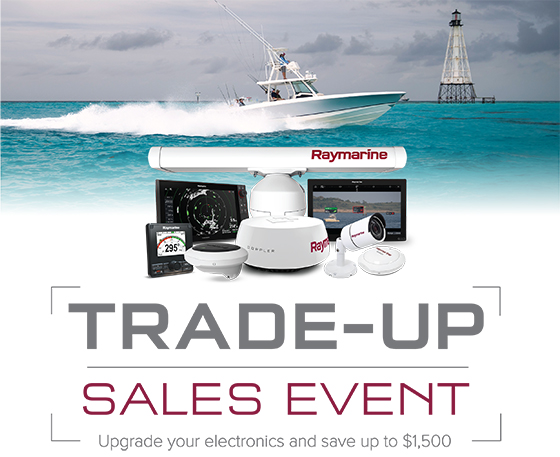Now is the time when boaters from across North America are busy preparing their vessels for the upcoming season, and FLIR is making it easier than ever for these eager mariners to upgrade their marine electronics. The Raymarine® Trade-Up Sales Event offers significant rebates on new Raymarine products purchased now until July 7, 2019. The more customers spend, the bigger the rebate, and additional loyalty bonuses reward existing Raymarine owners with even more money back. The deals - and the timing - couldn’t be better.
ElementTM sonar/GPS, VHF radios, EvolutionTM autopilot and more, Raymarine’s newest products and technologies make valuable time on the water safer, more productive and a lot more fun. Now, there’s an additional reason to choose Raymarine: money back in your pocket. Whether building a new electronics package or upgrading a current system, the more technology you add, the bigger the rewards. Simply choose Raymarine and save!
Raymarine Trade-Up Sales Event Rebates
Earn $250 on Raymarine purchase of $2,500 or more
Earn $500 on Raymarine purchase of $5,000 or more
Earn $750 on Raymarine purchase of $7,500 or more
Earn $1,000 on Raymarine purchase of $10,000 or more
Trade-Up Loyalty Bonus
Raymarine owners can earn an additional $250 loyalty bonus when upgrading from an existing Raymarine display
(limit two loyalty bonuses per claim).
Rebates will be paid in the form of a Visa prepaid card, mailed 4-6 weeks from the time a customer’s qualifying claim is approved.
.jpg)



































.png)

